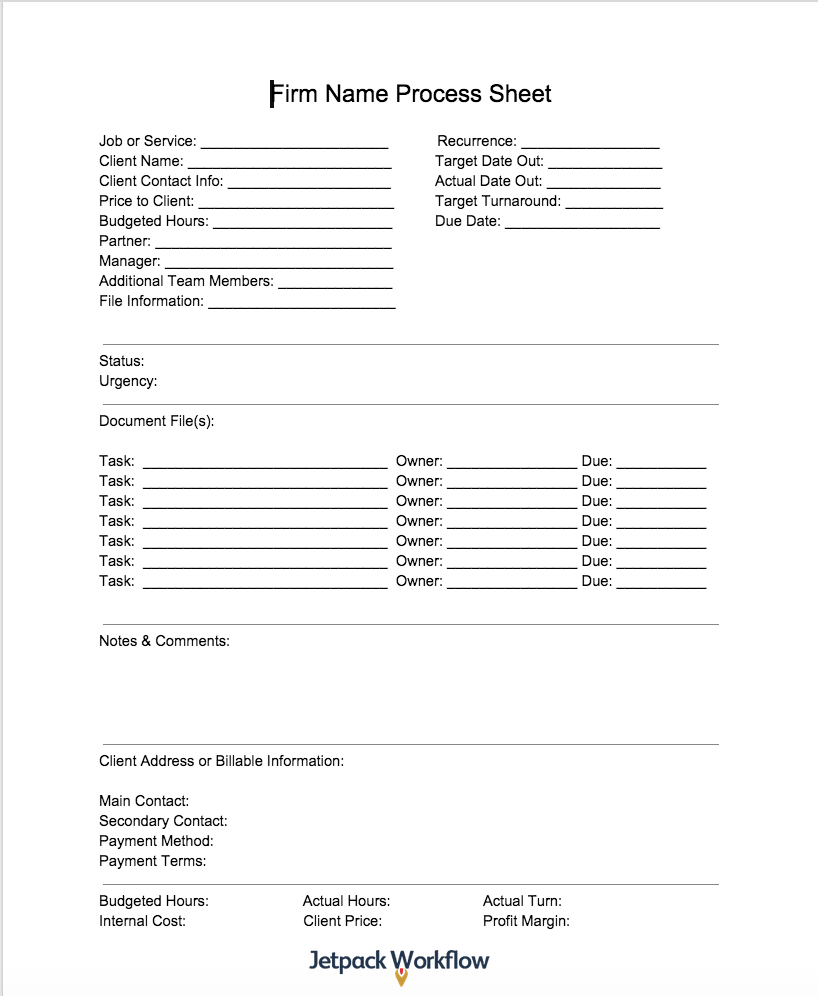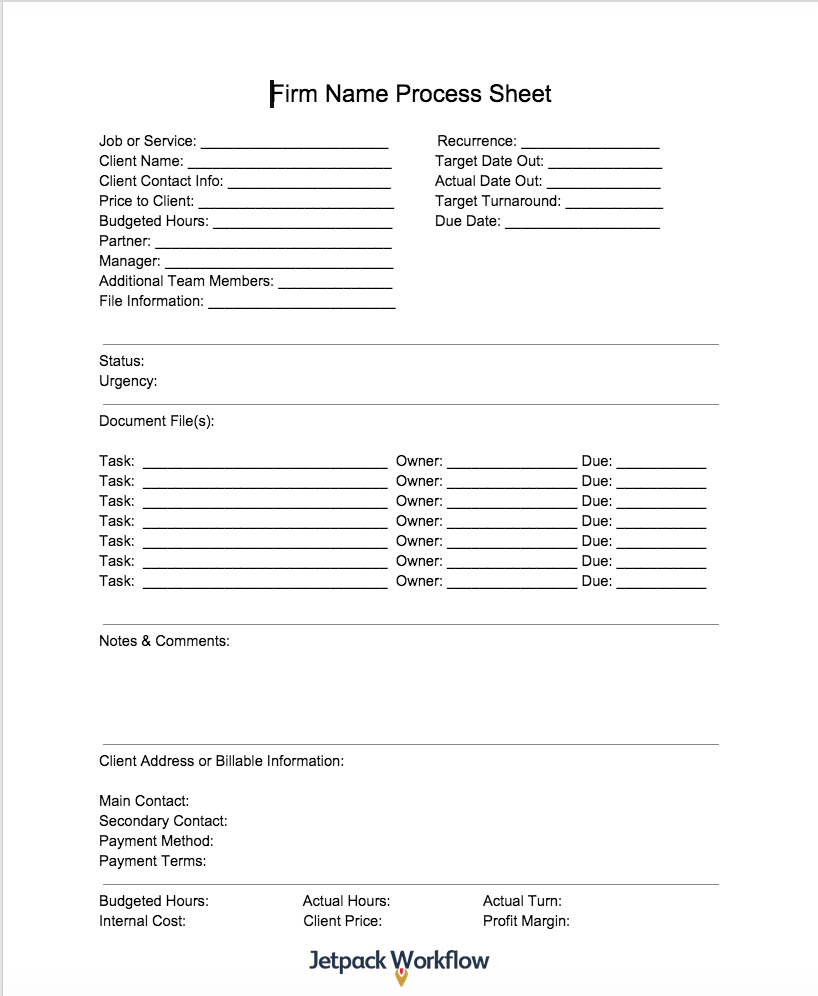How to Create a Bookkeeping Process Sheet

Today we’re going to look at how bookkeepers, CPA firm owners, other accounting professionals can create a robust bookkeeping process sheet.
Related Video on How to Create a bookkeeping process sheet
We like to create a process sheet in “buckets”, so they can they can be reviewed and optimized individually as the firm continues to grow.
Some important items to keep in mind before we discuss the “buckets” that go into the bookkeeping process sheet
Be sure to involve your team
When creating a process sheet, it’s important to involve your team. Why? Because they are the ones that are likely interacting with the current process, and can give great feedback into each step (good and bad!).
What metrics do you want to track?
Having your metrics in line will help inform the process sheet and tracking process. Some common ones we highly recommend would be turn around time, hourly budget, and target profit margin.
————-
The Three Bookkeeping Process Sheets “Buckets”
Bucket 1: The Bookkeeping Foundation
In the beginning stages of the process sheet, it’s important to lay a strong foundation. When creating your foundation, there’s a few things to keep in mind.
What baseline metrics do you want to track? You’ll see in the example above that we have turn around time, client budget, and allocated hours, along with standard fields such as client, team, date, even price to client. Some owners might shy away from listing the final price, and that is entirely up to you. We left in there because it’s easier to track the final metrics (ie profit %) with this information present. Also, if you bill fixed or value, then listing the price is typically public knowledge anyway.
Bucket 2: Process
The next step is the processing and fulfillment of the bookkeeping job. Aside from the standard tasks, it’s also important to create a few standardize labels or notes that can be used to help other team members, managers, or owners. Also, you have the option to had allocated time per task if multiple people will be working on the same job.
Bucket 3: Review & Complete
Finally, we have the “Review and Complete” process. This is where the work is closed out, and final metrics are recorded. This is often a much ignored area of the process sheet, but can provide tremendous insight into how your firm is running. As mentioned above, common metrics we recommend tracking would be budgeted vs actual hours, budgeted vs actual turn around time, and target vs actual profit margins.
With that in mind, the first step is to visualize and map our your bookkeeping process, then after the baseline is established, begin to identify key areas that can improve productivity and profitability.
Ready to Automate Your Workflow? Click Here to Watch a Full Video Demo







